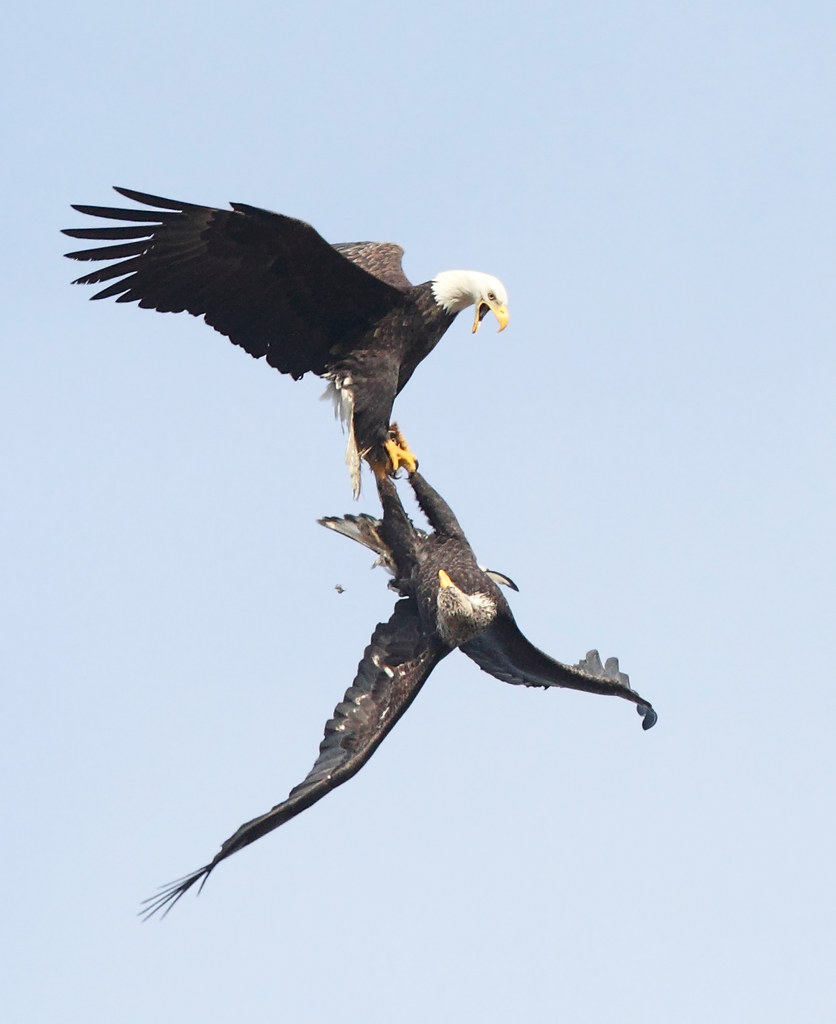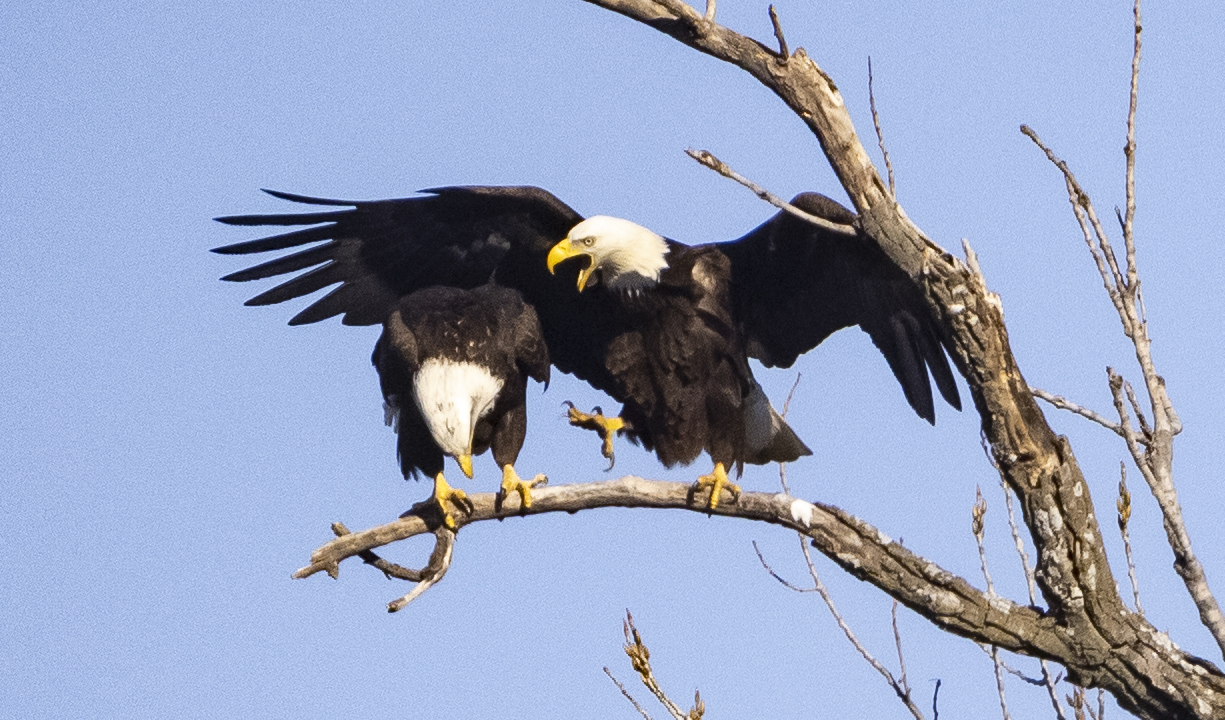In some cases, new bald eagle pairs will not mate during their first year at all, and have been known to spend much longer in one location before taking that step. Whether this is to assess each other or to assess their nesting area being unclear. This patience is again rather exceptional in the animal kingdom, but once everything is at last decided the act of consummation can finally take place. It is, for practical reasons, more earthbound than the aerial displays of the early romance, taking place either in the newly constructed nest or a nearby branch.

During the mating act, the two pair connect through their cloaca – the avian equivalent of genitals – and sperm is transferred through what is sometimes described as the cloacal kiss. This will often happen repeatedly during a honeymoon period that can last for days.

Between 5 and 10 days after a successful coupling, the female bald eagle will lay 1 to 3 eggs, with a day or two in between each laying. The chicks almost always hatch in the order they were laid. Once they are out in the world, the eggs must be protected fiercely from predators (something the powerful and fearsomely taloned bald eagle excels at) and incubated constantly to be kept warm. While this is a childcare sharing arrangement, with both parties taking turns to incubate over the 35 days the chicks take to hatch, it generally tends to be the female who will spend longest sitting atop the egg, while the male is out hunting more often. Well, we never said bald eagles defied all gender stereotypes.
Once hatched, the juveniles have a ferocious appetite, and both parents will take turns hunting to feed them. Chicks don’t need their food regurgitated, and will happily tear into raw meat. As a result of their large intake of protein, they grow fast and are ready to fledge – the beautiful term for a bird taking its first flight – by around 10 to 12 weeks of age.

However, unlike other birds, just because the chick has – literally – flown the nest, doesn’t mean that the parent’s job is over. Bald eagle fledglings will often stay very close to their birthplace for up to six months, and for at least the first three of those months the parents will still feed them. Learning to hunt from the air is an incredibly challenging skill to master, and the parents take their time teaching their offspring how to survive this way. Only once they are six months old, and reasonably skilled hunters, will the now adult eagles fly away into their future, which usually means four or more years of nomadic single life before it is their turn to take up amorous acrobatics.

As for the parents, now that they are successfully paired, the bald eagles will typically remain married and monogamous for the rest of their lives. The longer they are together, the more they will repair and finesse their nest.They may even make an alternative nest as a kind of second home, allowing the other to air out for one season at a time. These nests become ever larger and more elaborate over time, a physical manifestation of years of fidelity.

It’s true that there are some cases where eagles will enter into more polyamorous arrangements, such as triads where a male will take two wives and all three will contribute to the upbringing of chicks. These aren’t the norm, however, and it’s much more often that you will find bald eagles remain in a traditional marital arrangement for the rest of their lives. Less than 5% appear to “divorce”, much less than the national average among humans. Bald eagles may not say marriage vows, but it appears they do believe in til death do us part.


